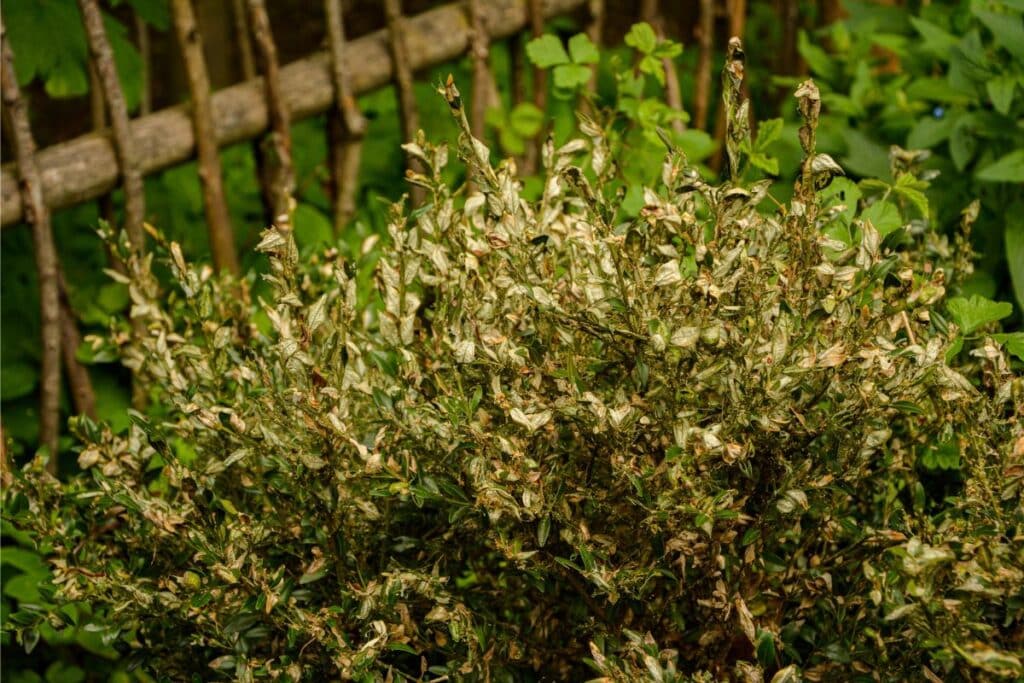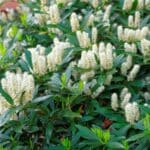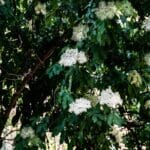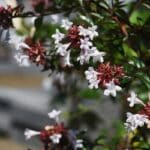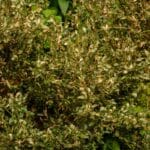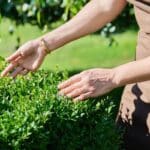Have you ever had a boxwood shrub in your backyard that suddenly started to decline in health? It can be very frustrating to have something that was once so vibrant and healthy start to wilt and die.
But don’t worry, there are some simple steps you can take to revive a dying boxwood shrub and get it back on the road to recovery.
Let’s take a look at what you need to do to take care of your boxwood shrubs.
What Causes a Boxwood to Die Back?
Boxwoods are a popular shrub found in many gardens and yards. Their hardy nature and ability to thrive in a variety of conditions makes them a great choice for gardeners.
But if you’ve noticed that your boxwood shrubs are starting to look unhealthy, it’s important to figure out why.
There are several factors that can cause boxwood dieback, so let’s take a look at some of the most common culprits.
Drought Stress
Boxwoods need regular watering during periods of drought or dry weather. If they don’t get enough water, their leaves will start to wilt and turn brown as they struggle to survive without enough moisture.
Too Cold Temperatures or Frozen Soil
Boxwoods don’t tolerate cold temperatures very well, so if the soil is consistently freezing during the harsh winter months, it can cause damage to the roots of your boxwood shrubs. This can lead to wilting or even death of the plant over time.
Insect Infestation
Insect infestations can be difficult to detect due to their small size, but there are signs that you can look for, such as boxwood leaves turning yellow or brown, discolored spots on the leaves, or chewed-up foliage near the base of your plants.
Volutella Stem Canker
Volutella stem canker is an infection caused by a fungus called Volutella buxi, which affects both young and mature boxwood plants alike.
Symptoms include wilted leaves with brown edges as well as dark-colored spots along stems and branches, which eventually girdle them and cause dieback over time if left untreated.
Root Rot
Root rot is a common problem for boxwoods, especially if they are planted in poorly drained soil.
Root rot symptoms include yellowing foliage and stunted growth. Root rot can be caused by too much water and poor air circulation around the roots.
Nutrient Deficiencies
Boxwoods require certain nutrients to stay healthy and thrive; if these nutrients are missing from the soil, then this can cause foliage discoloration and dieback.
Common nutrient deficiencies that can affect boxwoods include nitrogen, phosphorus, potassium, magnesium, iron, and zinc.
Boxwood Blight
Boxwood blight is a fungal pathogen that affects boxwoods and causes leaf spots and defoliation (the loss of leaves). It also causes turn the branches brown or blackish in color and then become dead branches.
Fertilizer Damage
Excessive use of fertilizers can damage your boxwoods by causing leaf drop or discoloration of foliage due to nutrient imbalances in the soil – so always follow application rates carefully when applying fertilizer around your shrubs.
Certain types of fertilizers may contain salts that can harm sensitive plants like boxwoods – so always read labels carefully before purchasing any products for use around your garden beds.
Improper Soil pH
One common cause of boxwood dieback is improper soil pH. Boxwoods need slightly acidic soil that has a pH between 5.3-6.2 in order to thrive.
If your soil is too alkaline, then the nutrients in your soil won’t be available to your boxwoods, causing them to suffer from nutrient deficiency and eventually die back.
Salt Damage
Another potential cause of boxwood dieback is salt damage. This happens when there is too much salt in the soil, either from natural sources like ocean spray or from fertilizers or pesticides that contain salts as an ingredient.
Salt damage will usually manifest itself as brown patches on the foliage and can eventually lead to plant death if left unchecked.
Incorrect Pruning
Incorrect pruning can also cause boxwood dieback over time.
Boxwoods should be pruned at least once a year during dormancy (late winter/early spring), but not more than three times per year – otherwise, you run the risk of stressing out your plants, causing them to become weak and susceptible to disease or insect infestation which could lead to eventual death if left unchecked.
Macrophoma Leaf Spot
Macrophoma leaf spot is another potential cause of boxwood dieback that can be difficult to diagnose without knowing what you’re looking for specifically.
This fungal infection appears as circular brown spots on foliage that slowly spread until they cover entire leaves or even entire branches, causing premature death if left untreated for too long.
Pests
Boxwood pests such as the boxwood leafminer can also contribute significantly towards boxwood diebacks if left unchecked for long enough periods of time due to their feeding habits which remove essential nutrients from affected plants and deprive them of needed energy sources that would otherwise help keep them healthy and strong over time.
It’s important to choose the right perennials to plant in front of boxwoods because planting the wrong companion plants can spread unwanted pests and diseases.
What Do Dying Boxwoods Look Like?
Let’s take a closer look at the symptoms of a failing boxwood so you can act accordingly.
Dead Foliage/Dead Leaves
One of the most common signs of an unhealthy boxwood is dead foliage or leaves. If some of your boxwood leaves are brown and crispy, then it’s likely that something is wrong with your plant.
A few dead leaves may be normal in wintertime when temperatures dip below freezing, but otherwise, it’s usually an indication that something else is going on with your plant.
Leaf Drop
Another symptom of an unhealthy boxwood is leaf drop. If you are noticing that more leaves than normal are falling off your boxwood bush or tree, then it’s time to take action.
Leaf drop can be caused by anything from drought stress to fungal disease but needs to be addressed quickly in order to save your plant from further harm.
Brown Leaves or Brown Patches
In addition to dead leaves and leaf drop, you may also notice that some or all of the leaves on your boxwood have turned brown or discolored patches have formed on them.
This could be caused by any number of issues ranging from nutrient deficiencies or insect damage to disease-causing fungi.
Bare Branches
If you notice that some branches on your boxwood are completely bare with no leaves whatsoever, then this could indicate a serious problem as well.
Leaf Tunneling
When pests like caterpillars start tunneling through the foliage on your boxwood plant, this can mean trouble for its health as well as its overall appearance.
Diseased Branches
Lastly, diseased branches are another sign that something might be wrong with your boxwood plant’s health. Diseased branches will appear discolored (often yellowish-brown) due to infection from bacteria.
How to Rejuvenate Boxwoods That Are Dying?
Read on for more tips on how to give your boxwood the proper care it deserves!
Ensure the Proper Planting Conditions
It’s important to make sure that your boxwood hasn’t been planted in poor planting conditions. A spot with well-draining soil and at least six hours of direct sunlight per day is ideal for most varieties of boxwoods.
If possible, move the plant to an area that meets these criteria; if not, consider amending the soil around it so that it drains better or adding additional mulch to protect its roots from extreme temperatures.
Water to Keep the Soil Moist
Once you’ve made sure your boxwood is planted in an area with appropriate growing conditions, it’s time to start watering it regularly—but not too much!
Boxwoods like moist soil, but they don’t like sitting in overly wet soil for long periods of time so water only when needed. Be sure not to overwater your plant, as this can lead to Phytophthora root rot and other issues. To ensure your boxwoods grow healthy, maintain a balance between moisture and proper drainage.
Prune Diseased Branches With Shears
If you notice any diseased branches on your boxwood hedge or tree, then prune them off with shears immediately. This will help prevent further damage and disease spread throughout the rest of the foliage – plus pruning also encourages healthy re-growth!
Make sure you dispose of any clippings safely or compost them away from other plants so that they don’t spread disease around your garden.
Add a Layer of Mulch Over the Root Zone
Adding mulch over the root zone is one of the best things you can do for an ailing boxwood. The layer of mulch helps protect the roots from extreme temperatures and keeps them moist by preventing water evaporation.
It also serves as an insulator against windy conditions. Be sure to use organic material such as bark or wood chips for the best results.
Remove Old Leaves and Debris
Accumulated leaves and debris can prevent sunlight from reaching your boxwoods’ leaves and cause them to become sickly.
To ensure your plants get enough light, remove any old leaves or debris from around the base of your shrubbery periodically throughout the year. This will also help get rid of any pests that may have been hiding in those areas.
Thin the Center of the Shrub to Facilitate Air Movement
If you find that there is too much foliage in a single area on your boxwood, try thinning out some branches in that area so that air can circulate better around it.
Apply a Slow-Release Fertilizer
Your plants won’t be able to revive themselves without proper nutrition! A slow-release fertilizer gives your plants essential nutrients over time instead of all at once—which can shock or burn them if overdone.
Applying slow-release fertilizer in late fall ensures a gradual nutrient supply, supporting healthy growth without risking harm to your plants.
Inspect for Pests and Diseases Regularly, Then Administer Treatments
It’s important to keep an eye out for any diseases or pests. These common reasons may be affecting your boxwoods’ health, so you can treat them immediately before they spread further into other parts of your plant population.
Regular inspections will give you an idea of what treatments are necessary and when they need to be applied in order for optimal results!
Can Boxwoods Be Brought Back to Life?
Reviving a dying boxwood shrub doesn’t have to be difficult—as long as you know what steps to take!
With these tips in mind, you should be able to bring your wilting boxwood back from near-death!
If you think growing boxwood is hard, there are other alternatives to boxwood that you can try.
FAQs
How do you rejuvenate boxwoods?
Rejuvenating boxwoods involves pruning out dead or overgrown branches, providing proper watering and fertilization, and ensuring adequate sunlight and airflow to encourage new growth.
Will boxwoods grow back after turning brown?
Yes. Boxwoods can grow back after turning brown if the damage is not severe and the underlying causes, such as improper watering or disease, are addressed promptly.
Can a boxwood recover from boxwood blight?
While boxwoods can sometimes recover from boxwood blight with aggressive pruning and fungicidal treatments, severe infections may result in the need to remove and replace affected plants.
What does a diseased boxwood look like?
Signs of diseased boxwoods may include yellowing or browning leaves, black spots or lesions on the foliage, defoliation, and dieback of branches. Boxwood blight, in particular, presents with distinctive dark brown to black lesions on leaves and stems.
How do you make boxwoods healthy?
To make boxwoods healthy, ensure they are planted in well-draining soil, receive adequate moisture without being waterlogged, are properly spaced to promote airflow, and are regularly pruned to maintain shape and remove dead or diseased branches. Additionally, monitoring for pests and diseases and addressing any issues promptly can help keep healthy wood and green stems.
*image by weha/depositphotos

